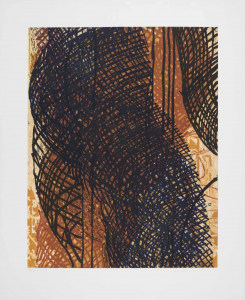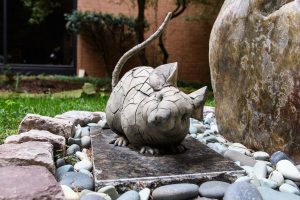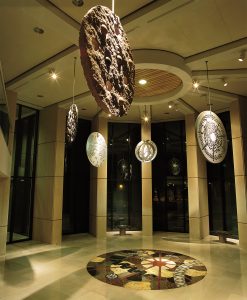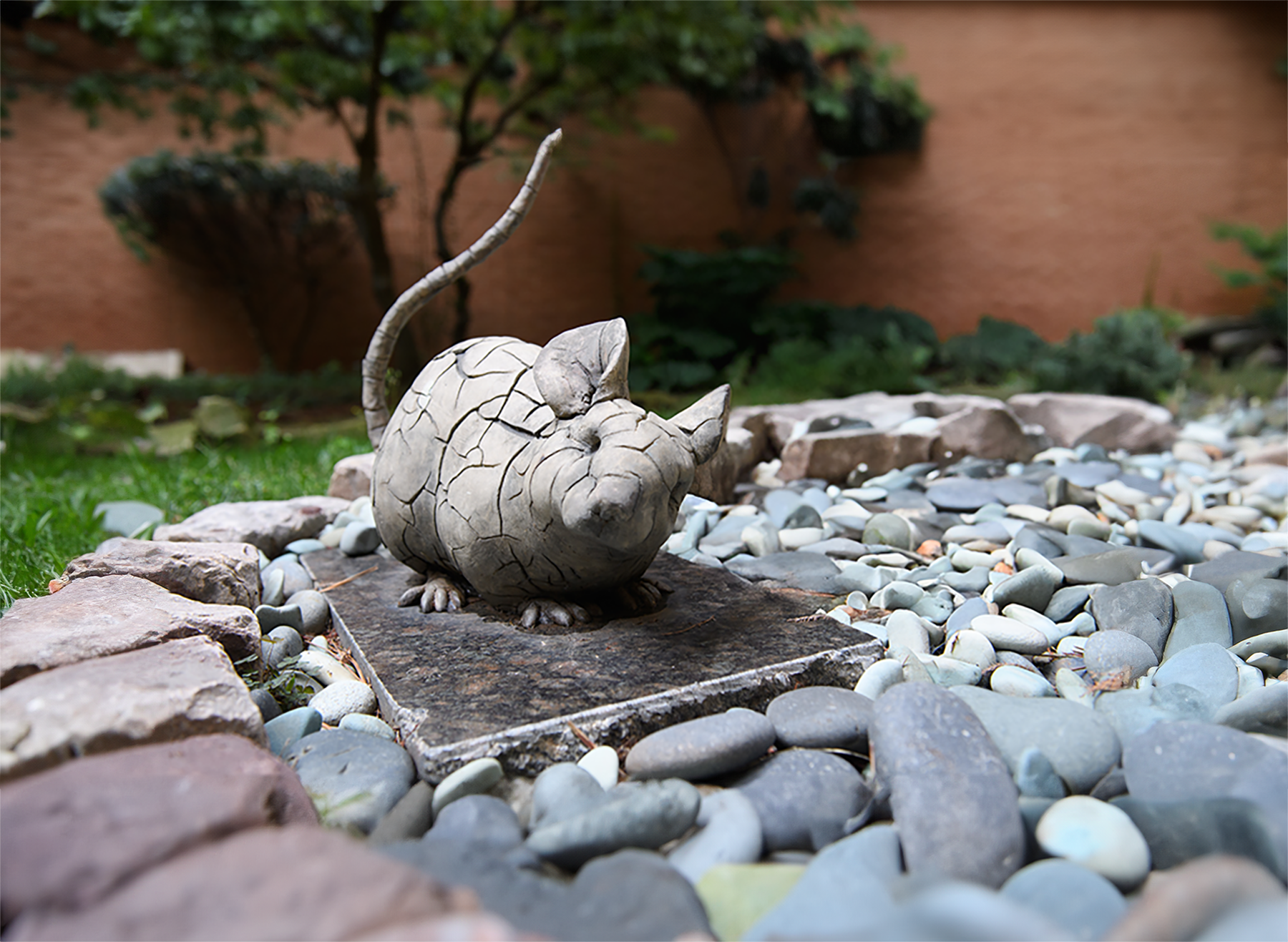In June, OMRF installed a new sculpture in the courtyard. The installation, Perseverance, honors the research of Dr. Rod McEver. It’s but the latest addition to a significant collection of art that adorns OMRF’s campus.
“You often hear that something is more art than science, or vice versa,” says OMRF Creative Director Jenny Lee, whose position means she’s responsible for most of the things people can see at OMRF. “But at OMRF, we have a healthy dose of both.”
Want to see for yourself? All you need is a few minutes and an OMRF access badge.

If you head from the Research Café to Aging & Metabolism and climb the stairs to the second floor, you’ll find yourself face-to-face with Amplitude, a 2000 piece by artist Terry Winters. This one is an engraved print, created by meticulously carving layers into a block, filling the carved spaces with ink, and pressing paper into the grooves to reveal an image.
Scans, sketches, photographs, busts and more make up the dozens of other works in the foundation’s collection, which jumped in size in 2005 thanks to a major grant OMRF received.
“The Donald W. Reynolds Foundation gave a big gift to renovate the animal facility, and towards the end they offered a supplement for art,” says OMRF Vice President and Chief Financial Officer Tim Hassen.
For that art, the Reynolds Foundation provided specific guidance: Choose pieces from Oklahoma artists that visually represent the focus of nearby programs and integrate art that works with the space. Most of the resulting pieces are sprinkled throughout the Bell Building, home of Comparative Medicine, though you can also find others around the campus.
Want a local artist? Native Oklahoman Jon Burris created 16 photogram prints combining medical and scientific equipment with abstract shapes. His series hangs in the second-floor hallway between the Bell and Massman buildings.
Sculptures dot the foundation’s outdoor spaces. In the courtyard outside of Technology Ventures, you’ll find Frances Bagley’s Untitled, a pair of headless figures that bear a passing resemblance to the Venus de Milo – if she was composed of stones in metal caging.
Alongside those figures, you’ll also see a quintet of oversized mice by David Phelps, an Oklahoma City sculptor whose works can also be found on the University of Oklahoma’s Norman campus and at the McCarran International Airport in Las Vegas.

For Jenny, the playful stone rodents, whose siblings can also be found in OMRF’s courtyard and on the roof above Technology Ventures, resonate because they connect directly to the foundation’s research. “They’re larger-than-life depictions of the animals that are so vital to our scientists’ ongoing work,” she says.
While the Reynolds grant added many pieces, even before then, art abounded at OMRF. Since 1998, the Flame of Philanthropy has stood (outside the Philanthropy Department, of course) in Lytle Courtyard. Sandra Alaupovic, who was married to OMRF scientist Petar Alaupovic, crafted the bronze sculpture as a salute to the givers whose support makes the foundation’s research possible.
Still, if there’s one signature piece at OMRF, it’s the group of suspended disks and accompanying piece inlaid in the floor of Everest Pavilion, OMRF’s main entry in the foundation’s original Chapman Building.

Created in 2000 by Jesús Moroles as part of a renovation to the pavilion, the pieces draw from the science of OMRF. Scientist Jordan Tang, who was also an artist, provided input on the designs, which represent artistic interpretations of molecular processes like cell division.
Moroles gave titles like Gene to Cure and In Search of Healing to the hanging disks. Still, most OMRFers know them by a nickname drawn from their appearance: the “cookies.”
Quincy Morris, who often mans the desk by Moroles’ work, says that “when patients come in, they just stop to admire them for a while.”
Jenny encourages everyone at OMRF to do the same, especially if you’re wrestling with a difficult work problem. “The next time you’re stuck, take a walk,” she says. “Rest your gaze on something new. You never know what might ignite
your imagination.”



